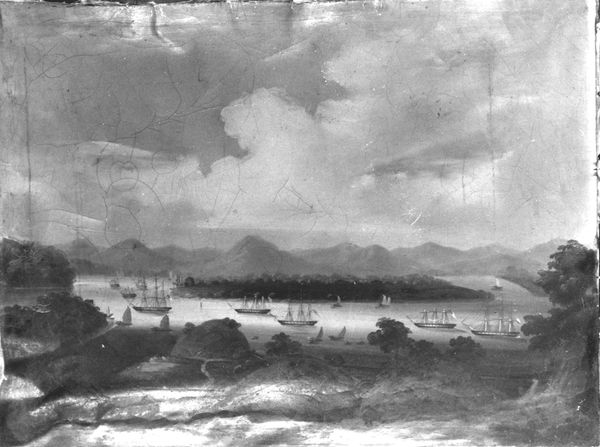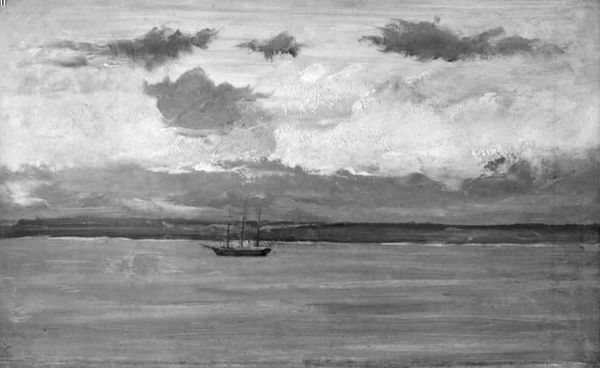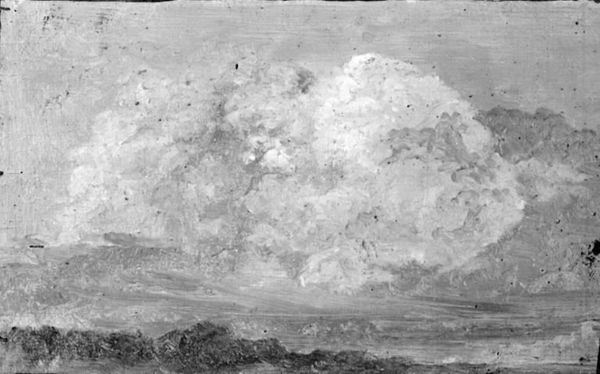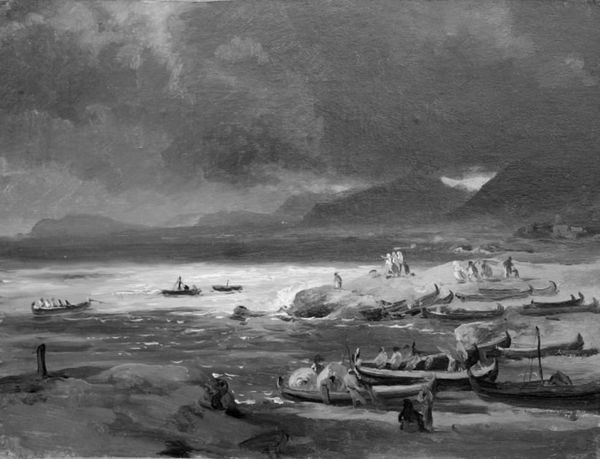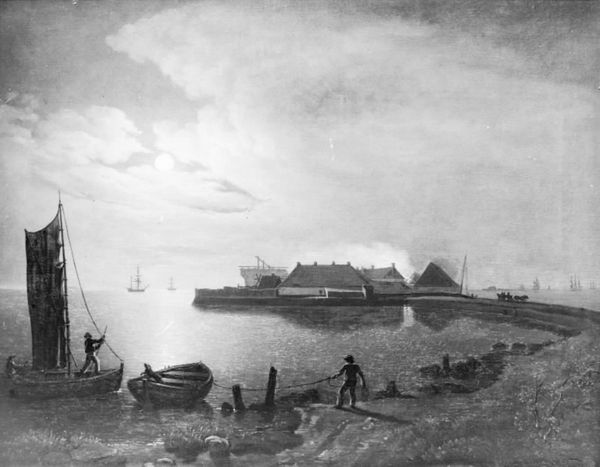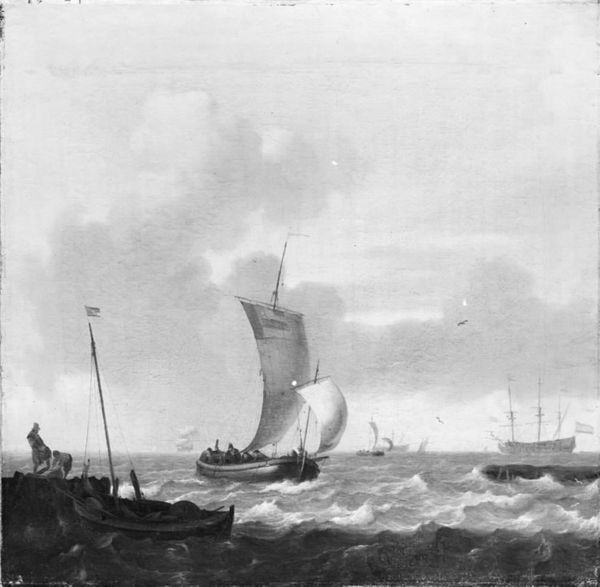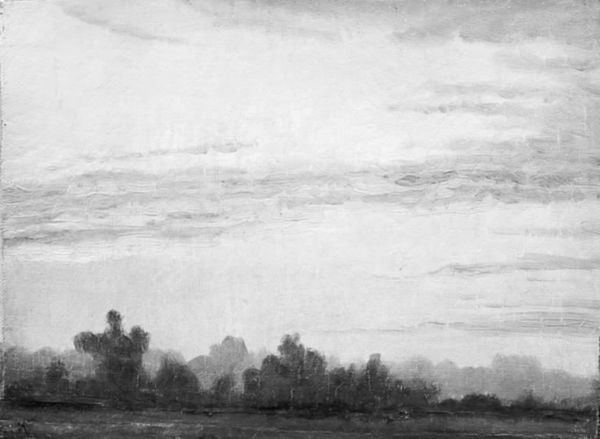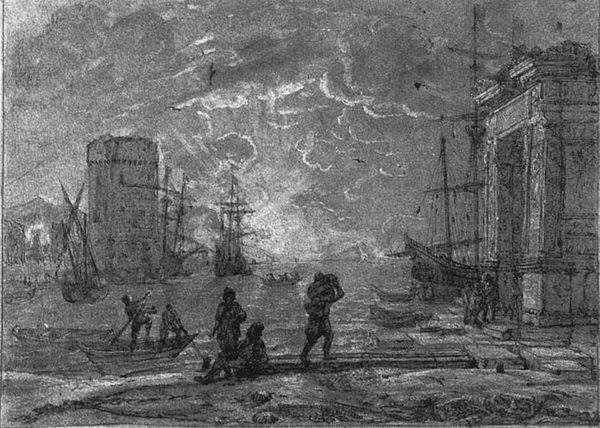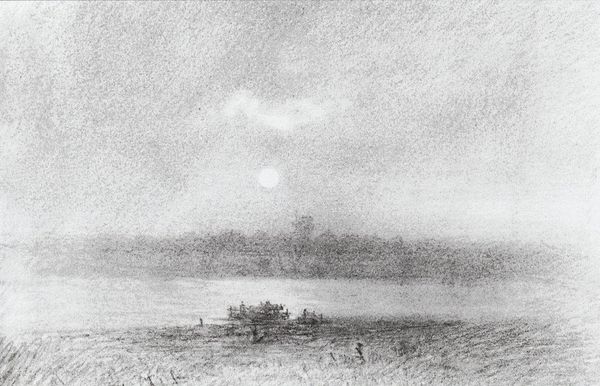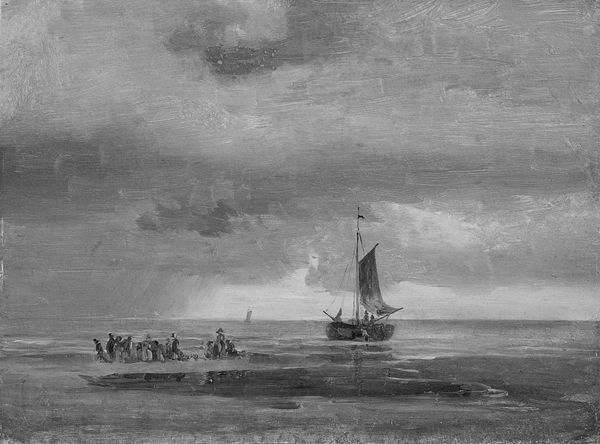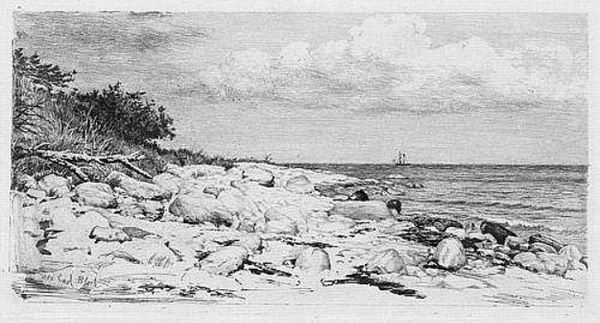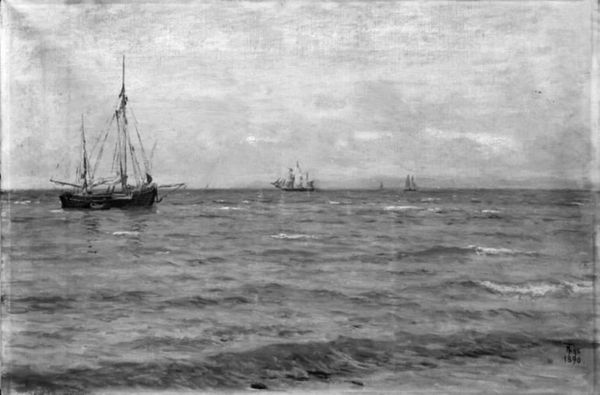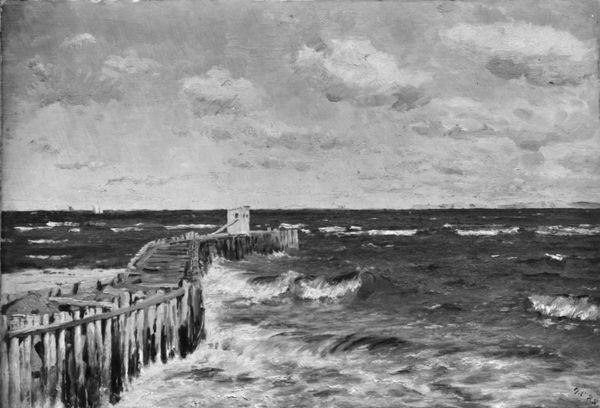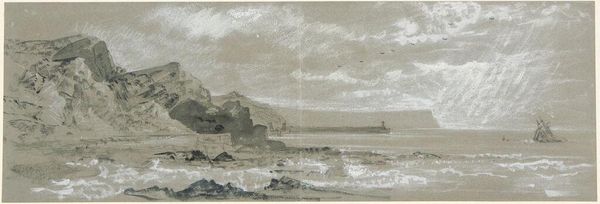
The Sound with Rain Clouds and Ships in the Background 1838
0:00
0:00
painting, watercolor
#
painting
#
landscape
#
watercolor
#
romanticism
#
cityscape
#
skyscape
#
realism
Dimensions: 8.5 cm (height) x 13 cm (width) (Netto)
Editor: This is Lorenz Frølich's "The Sound with Rain Clouds and Ships in the Background," painted in 1838 with watercolors. The subdued tones give the cityscape a rather melancholic air. How does its historical context influence its interpretation? Curator: That's a keen observation. Considering the era, Romanticism, and its societal backdrop, it’s hard not to view it as a reflection of the anxieties of a changing world. Cityscapes, then, often became metaphors. Does this 'melancholic air,' as you call it, invite contemplation of a specific societal mood? Editor: Perhaps a questioning of progress? A beautiful yet slightly somber reflection on humanity’s place within nature's grand scheme? Curator: Exactly. The very act of depicting a city – a symbol of human enterprise – juxtaposed with the imposing, indifferent force of nature suggests this questioning. Romantic artists often grappled with the public's relationship to a rapidly industrializing landscape. Notice how the ships are small, almost swallowed by the immensity. Does that evoke any feeling about man versus machine? Editor: I see what you mean. They're present, yet diminished. Perhaps a commentary on human ambition dwarfed by nature’s power and scale. Curator: Precisely. Art didn't exist in a vacuum; institutions like museums and galleries shaped its reception, creating public dialogues. So, understanding Frølich’s choice to exhibit a piece like this offers insight into the cultural conversations of the time. Editor: It’s amazing how a simple landscape can hold so many layers of historical and societal meaning! Curator: Indeed! It reminds us that art is often a mirror reflecting—and sometimes distorting—the society it comes from.
Comments
No comments
Be the first to comment and join the conversation on the ultimate creative platform.
